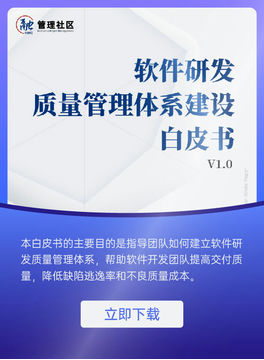Understanding the Minimum Viable Product in Agile
The Minimum Viable Product in Agile is a fundamental concept that emphasizes delivering a basic version of the product with just enough features to satisfy early customers and gather valuable feedback. It serves as a starting point for iterative development, allowing teams to test the market, validate assumptions, and refine the product based on real-world usage.
An MVP is not a fully polished or feature-rich product. Instead, it focuses on the core functionality that addresses the most critical needs of the target audience. By releasing an MVP early, teams can quickly learn what works and what doesn't, enabling them to make adjustments and improvements in subsequent iterations. This iterative approach helps to reduce the risk of building a product that doesn't meet the market's needs or expectations.
For example, consider a startup developing a new mobile app. Instead of spending months or years building a comprehensive app with all possible features, they might create an MVP that includes only the essential features, such as user registration, basic search functionality, and the ability to view and interact with a limited set of content. This MVP can be launched to a small group of early adopters, who can then provide feedback on the app's usability, functionality, and overall value proposition. Based on this feedback, the development team can then prioritize and add new features in subsequent releases.
The Concept of a Complete Product in Traditional Development
In contrast to the Agile approach, traditional development typically aims to deliver a complete product at the end of a predefined development cycle. This approach follows a sequential, linear process, often referred to as the Waterfall model, where each phase of development (such as requirements gathering, design, development, testing, and deployment) is completed before moving on to the next.
The goal of traditional development is to create a product that meets all the specified requirements and is fully functional, reliable, and ready for widespread use. This requires a detailed upfront planning and analysis phase, where all the features, functionality, and requirements of the product are defined in great detail. Once the requirements are finalized, the development team proceeds with building the product according to the plan.
Traditional development is often favored in industries where precision, reliability, and compliance are critical, such as aerospace, healthcare, and finance. In these industries, the consequences of releasing a product with bugs or incomplete functionality can be severe. Therefore, a thorough and comprehensive development process is necessary to ensure the quality and integrity of the product.
For instance, in the development of a new medical device, strict regulations and safety standards must be adhered to. The traditional development approach allows for a detailed and systematic process of requirements gathering, design, testing, and validation to ensure that the device meets all the necessary regulatory requirements and provides accurate and reliable results.
Key Differences in Approach
One of the primary differences between the MVP in Agile and the complete product in traditional development is the approach to requirements gathering and planning. In Agile, requirements are often defined in a more flexible and iterative manner. The focus is on delivering value quickly and adapting to changing requirements throughout the development process. Agile teams use techniques such as user stories and backlogs to prioritize and manage requirements, allowing for a more dynamic and responsive approach.
In traditional development, on the other hand, requirements are typically defined upfront in great detail. A comprehensive requirements document is created, outlining all the features, functionality, and specifications of the product. This document serves as the basis for the entire development process, and any changes to the requirements are carefully managed through a formal change control process.

Another significant difference is the development timeline and release strategy. Agile development follows an iterative and incremental approach, with multiple short development cycles (sprints) and frequent releases of the product. This allows for early feedback and the ability to make adjustments quickly. In contrast, traditional development often has a longer development timeline, with a single release at the end of the project. This approach can result in a longer time to market and a higher risk of building a product that no longer meets the market's needs by the time it is released.
The level of collaboration and communication also varies between the two approaches. Agile emphasizes close collaboration between the development team, product owner, and stakeholders throughout the development process. Regular meetings, such as daily stand-ups and sprint planning sessions, facilitate communication and ensure that everyone is on the same page. In traditional development, communication is often more structured and formal, with clear lines of authority and a more hierarchical decision-making process.
Advantages and Disadvantages of Each Approach
The MVP approach in Agile offers several advantages. It allows for rapid experimentation and learning, enabling teams to validate their ideas and assumptions quickly. By releasing an MVP early, businesses can gain valuable insights into customer needs and preferences, which can inform the development of the product. Additionally, the iterative nature of Agile development allows for continuous improvement and the ability to adapt to changing market conditions.
However, the MVP approach also has some limitations. An MVP may not provide a complete or polished user experience, which could potentially lead to negative feedback from early customers. There is also a risk of underestimating the complexity of the product and not including enough core functionality in the MVP, which could result in a lack of user adoption.
The traditional development approach, with its focus on delivering a complete product, has its own set of advantages. It provides a clear and structured development process, which can be beneficial for large and complex projects. The upfront planning and detailed requirements gathering help to ensure that the product meets all the specified requirements and is of high quality. Additionally, the formal change control process helps to manage changes to the requirements in a controlled and systematic manner.
On the other hand, the traditional development approach also has some drawbacks. The long development timeline and single release strategy can result in a longer time to market, which can put businesses at a competitive disadvantage. The rigid requirements definition and change control process can also make it difficult to adapt to changing customer needs and market conditions.
Choosing the Right Approach
When deciding between the MVP approach in Agile and the complete product approach in traditional development, several factors need to be considered. The nature of the product, the target market, the business goals, and the available resources and time are all important considerations.
For products in highly competitive and rapidly evolving markets, the MVP approach in Agile may be more suitable. It allows for quick experimentation, learning, and adaptation, which can help businesses stay ahead of the competition. For example, in the tech startup world, where innovation and speed are crucial, the MVP approach is often favored to quickly validate ideas and gain market traction.
In industries where precision, reliability, and compliance are critical, such as aerospace, healthcare, and finance, the traditional development approach may be more appropriate. The detailed upfront planning and rigorous testing and validation processes help to ensure the quality and integrity of the product.
Ultimately, the choice between the two approaches should be based on a careful assessment of the specific needs and circumstances of the project. In some cases, a hybrid approach that combines elements of both Agile and traditional development may be the most effective solution.
In conclusion, the concepts of Minimum Viable Product in Agile and the complete product in traditional development represent two different approaches to product development. Each approach has its own strengths and weaknesses, and the choice between them depends on various factors. By understanding the differences between these two approaches, product managers and developers can make informed decisions that will lead to the successful development and launch of products that meet the needs of the market and the business. Whether it's the iterative and flexible nature of Agile with its MVP or the structured and comprehensive approach of traditional development, the key is to select the approach that best aligns with the project's goals, requirements, and constraints. As the business landscape continues to evolve, the ability to adapt and choose the right development approach will be crucial for organizations to stay competitive and deliver value to their customers.
ARTICLE TITLE :Minimum viable product in Agile vs. complete product in traditional development ,AUTHOR :ITpmlib

















